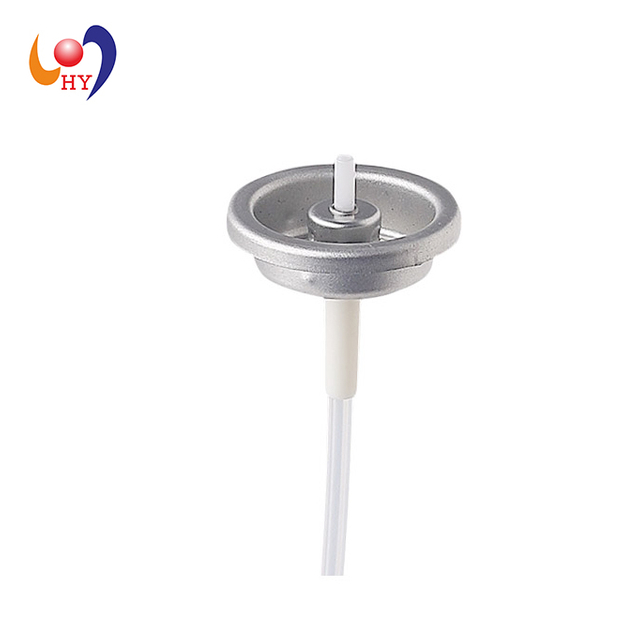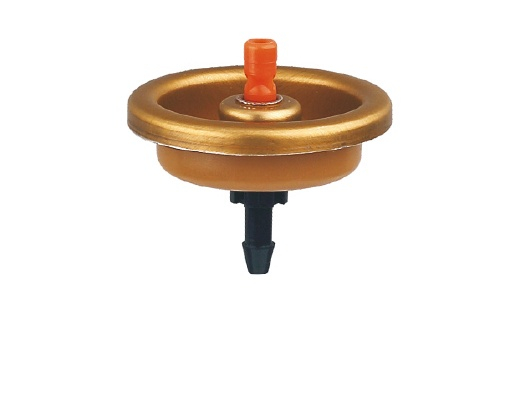- All
- Product Name
- Product Keyword
- Product Model
- Product Summary
- Product Description
- Multi Field Search


Views: 185 Author: Site Editor Publish Time: 2025-05-23 Origin: Site









Aerosol valves are a critical component in the functionality of spray products. Whether it's a can of air freshener, insect repellent, or industrial lubricant, the aerosol valve governs how the contents are released—ensuring safety, precision, and efficiency. Despite their small size, aerosol valves are a marvel of mechanical engineering, enabling a controlled and consistent discharge of product under pressure. These devices are designed to withstand varying pressures and product formulations, making their design and operation a key subject of interest in the packaging industry.
An aerosol valve typically consists of multiple parts including the actuator, stem, spring, gasket, and housing. Each part has a dedicated role in initiating and sustaining the spray process. Understanding how these parts interact is essential for professionals in manufacturing, engineering, and product design. This article explores aerosol valve operations in detail, offering in-depth insights into how these components function and contribute to the broader aerosol delivery system.
The fundamental principle behind an aerosol valve lies in pressure differential. When the actuator is pressed, the valve opens, allowing the pressurized propellant inside the can to force the product through the valve and out into the atmosphere in the form of fine mist or foam. The valve remains closed when not in use, preventing leakage or unwanted discharge.
| Component | Function |
|---|---|
| Actuator | The external button pressed by the user to release the spray. |
| Valve Stem | A conduit through which the product travels to the actuator. |
| Gasket | Seals the valve to prevent leaks when not in use. |
| Spring | Pushes the valve stem back to its original position after use. |
| Mounting Cup | Secures the valve to the aerosol container. |
| Housing | Guides the product from the canister to the stem and actuator. |
Each component must be manufactured with precision to maintain valve integrity over time. The choice of materials, especially for gaskets and springs, directly impacts the valve’s compatibility with various propellants and active ingredients.
Aerosol valves are not one-size-fits-all. Their design varies significantly depending on the type of product they dispense. Below are the most common types:
These valves allow the product to be dispensed as long as the actuator is pressed. Common in deodorants and air fresheners, they offer smooth, uninterrupted delivery.
Found in medical aerosols like inhalers, these valves release a pre-determined quantity of the product per actuation, ensuring dosage control and patient safety.
These are specifically designed to mix air with the product to produce foam. Personal care products such as shaving creams use this type extensively.
Each valve type serves a specific purpose, and its performance depends on precise internal engineering, the pressure range of the propellant, and the viscosity of the formula.

One of the most important considerations in aerosol valve design is product compatibility. A mismatch between the valve material and the aerosol contents can lead to corrosion, clogging, or even failure to dispense. For example, products with high acidity or strong solvents require chemically resistant gaskets and coatings. Similarly, thick formulations need wider stems or specialized housing structures to avoid clogging.
Manufacturers must test valves under simulated conditions to evaluate chemical stability, flow rate, and mechanical resilience. Compatibility testing is also key to ensuring long-term product performance across different climates and user handling scenarios.
Even the best-engineered aerosol valves can face issues under certain circumstances. Understanding potential failures helps prevent customer dissatisfaction and costly recalls.
Valve Leakage: Often caused by improper sealing or damaged gaskets. Preventative solution: inspect gaskets during production and use better sealing compounds.
Clogging: Occurs when thick or particulate-laden formulas dry out within the stem. Using self-cleaning actuators or wider orifices can mitigate this.
Inconsistent Spray: Caused by poor pressure regulation or malfunctioning springs. Testing spring tension and uniform can filling helps avoid this issue.
For industrial users, storing aerosol products in temperature-controlled environments can prevent pressure fluctuations and valve degradation. It's also advisable to periodically test batch samples for valve performance using standardized burst and spray pattern tests.
Q1: What materials are aerosol valves made of?
Most aerosol valves are made from a combination of metal (like stainless steel or aluminum), plastic (such as polyethylene or polypropylene), and elastomers for gaskets.
Q2: Can aerosol valves be recycled?
While aerosol cans are often recyclable, valves may contain mixed materials. It's best to consult local recycling guidelines.
Q3: What is the average lifespan of an aerosol valve?
If stored correctly, aerosol valves can remain functional for over 3 years. However, performance may vary based on formulation and storage conditions.
Q4: How is valve quality tested?
Valves undergo rigorous testing such as vacuum leak tests, spray pattern analysis, and mechanical endurance trials to ensure consistent functionality.

Aerosol valves are a hidden yet vital component in a wide range of consumer and industrial products. Their design intricacies and operational reliability have a direct impact on product performance, user experience, and safety. From the actuator you press to the precise mist you receive, every element is a result of meticulous engineering.
Understanding how aerosol valves operate helps not only manufacturers and engineers but also formulators and brand developers who rely on precision dispensing to maintain product efficacy. Whether you're developing a new pharmaceutical aerosol or optimizing a consumer spray product, attention to valve design and operation is paramount for success.
Copyright © 2024 HengYu Aerosol Can. All Rights Reserved. Sitemap | Supported by leadong.com 粤ICP备2024338468号